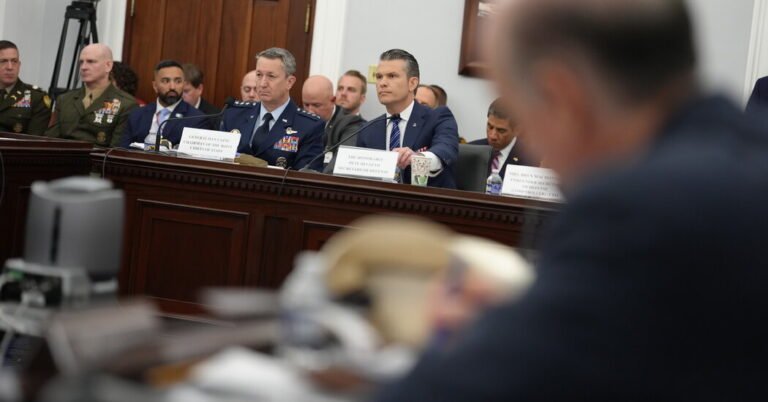In response to often sharp questioning from House Democrats on Tuesday, Defense Secretary Pete Hegseth defended the Pentagon’s deployment of nearly 5,000 active-duty Marines and National Guard members to help the police in Los Angeles quell sporadic unrest — at an estimated cost of $134 million.
Mr. Hegseth, a National Guard veteran, also suggested in testimony before the House Appropriations Committee that the use of the Guard, part-time citizen soldiers, for homeland defense would expand under President Trump.
“I think we’re entering another phase, especially under President Trump with his focus on the homeland, where the National Guard and Reserves become a critical component of how we secure that homeland,” Mr. Hegseth told lawmakers.
Officials in Los Angeles, as well as other major cities across the country controlled by Democrats, have expressed concern that the military deployments in California could set a precedent and serve as a test run for other urban areas where the administration’s aggressive immigration enforcement could prompt large protests.
Mr. Hegseth’s appearance before the House Appropriations Committee — the first of three hearings he has on Capitol Hill this week — was widely anticipated by official Washington. It was his first congressional hearing since a Senate panel considered his nomination in January.
In recent months, Mr. Hegseth has sought to fend off a series of contentious issues that threatened to undermine his credibility inside the Pentagon and, more important, inside the White House.
Perhaps most damaging were his disclosures on the commercial chat app Signal of flight sequencing of American fighter jets in strikes on Yemen. Mr. Hegseth has also seen the dissolution of his inner circle of close advisers. Four members of the team he brought to the Pentagon have left the department, three of them accused of leaking information and escorted from the building. A fifth — his chief of staff — has also departed his post.
Democrats on the committee immediately homed in on those issues.
“Your tenure as secretary has been marked by endless chaos,” said Representative Rosa DeLauro of Connecticut, the committee’s top Democrat.
“Your careless sharing of military secrets in a nonsecure Signal chat,” she added, “could have placed American airmen in danger.”
But Mr. Hegseth did not engage the criticism, and the most contentious parts of the two-and-a-half-hour hearing soon pivoted to the Trump administration’s decision to deploy 700 active-duty Marines and 4,000 National Guard troops to Los Angeles.
“The president’s decision to call the National Guard troops to Los Angeles was premature, and the decision to deploy active-duty Marines as well is downright escalatory,” said Representative Betty McCollum, Democrat of Minnesota. “Active-duty military has absolutely no role in domestic law enforcement, and they are not trained for those missions.”
But Mr. Hegseth defended the deployment, telling lawmakers, “We ought to be able to enforce immigration law in this country.”
In a heated exchange with Representative Pete Aguilar, Democrat of California, Mr. Hegseth cited his own experience as a National Guard soldier deployed against Black Lives Matter protesters five years ago.
“As a secretary of defense who’s been in a unit holding riot shields outside the White House during the chaos of the summer of 2020,” he said, “I know what it’s like to be immediately deployed into a situation like that.”
At one point, he ignored direct questions from Ms. McCollum, the top Democrat on the panel’s defense subcommittee, about the cost to deploy troops to Los Angeles.
Instead, Mr. Hegseth used his time to attack Gov. Tim Walz of Minnesota, Gov. Gavin Newsom of California, Mayor Karen Bass of Los Angeles and the Biden administration. A clearly frustrated Ms. McCollum yielded back her time.
When he was questioned again about the mission’s projected costs, Mr. Hegseth deferred to the Pentagon’s acting comptroller, Bryn Woollacott MacDonnell, who said that Marine and National Guard deployments — estimated to last 60 days — would cost about $134 million, mainly for travel, housing and food.
John Ismay contributed reporting.
